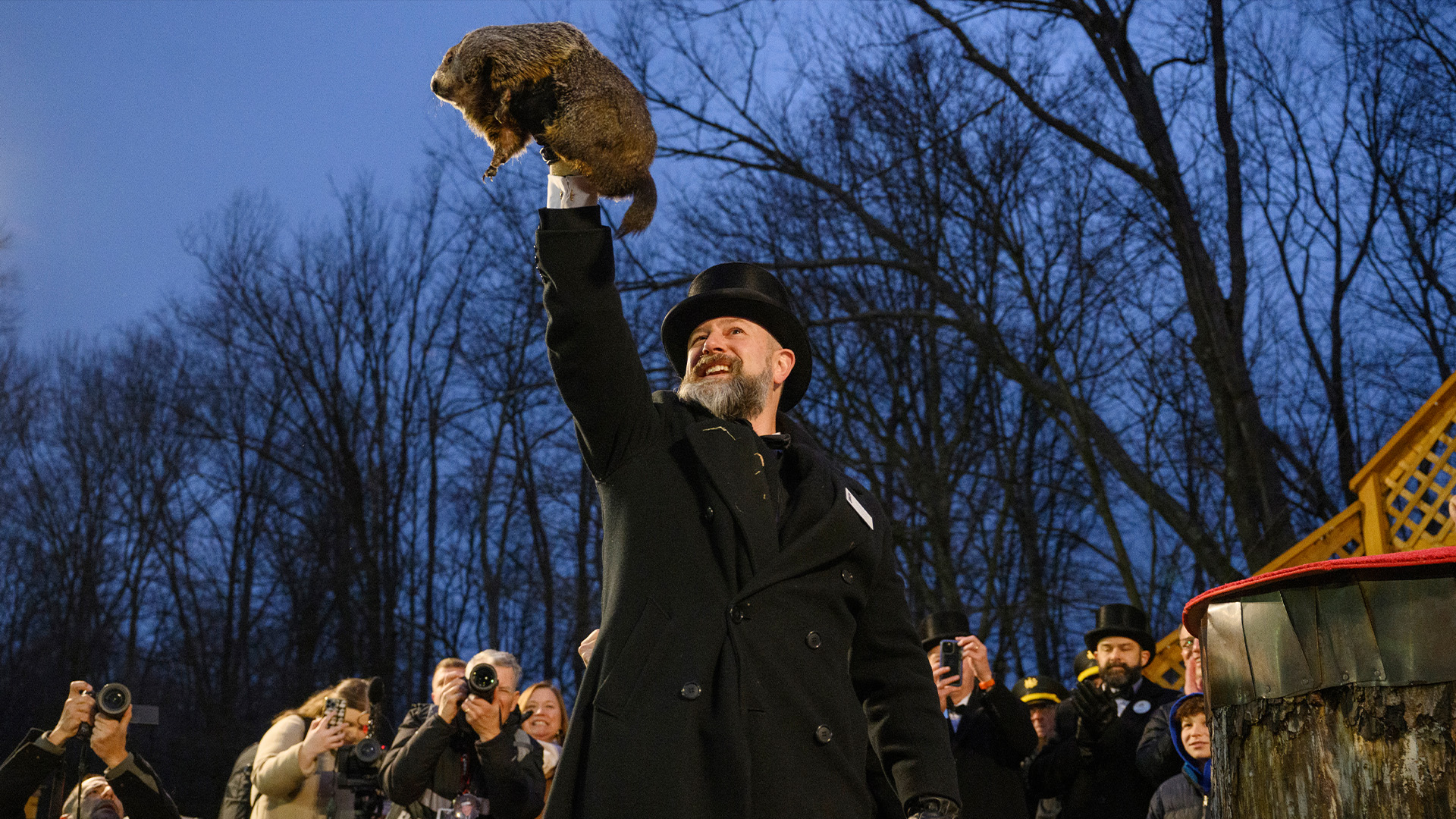How accurate are Punxsutawney Phil's Groundhog Day forecasts?
The rodent Punxsutawney Phil has been predicting the start of spring since 1887. But how good is Phil at forecasting the weather?

Celebrity groundhog Punxsutawney Phil emerged from his "burrow" on Sunday (Feb. 2, 2025) as a crowd in his home town in Pennsylvania waited with baited breath to see if the rodent would "see" his shadow.
He did.
According to legend, this means that there will be six more weeks of winter. If he hadn't, we supposedly could have expected to see an early spring.
Is Punxsutawney Phil usually right?
Phil the groundhog has been forecasting the seasons on Groundhog Day at Gobbler's Knob in Punxsutawney since 1887, but just how good is he at his job?
Not very, it turns out.
Punxsutawney Phil's process for predicting spring hasn't changed much in the past 138 years. The Punxsutawney Groundhog Club takes care of whichever groundhog is the current Phil year-round, and on each Feb. 2, members of the club's Inner Circle rouse Phil at sunrise to see if he casts a shadow. Contrary to popular belief, Phil doesn't actually have to see his shadow; he just has to cast one to make his wintry prophecy.
According to the Groundhog Club's records, which span from 1886 to 2024, the various incarnations of Punxsutawney Phil have predicted 108 forecasts of more winter and 21 of early spring. There are nine years without any records, and even the Punxsutawney Area Chamber of Commerce, which keeps track of these things, doesn't know what happened to Phil during those years. Data from the Stormfax Almanac's data shows that Phil's six-week prognostications have been correct about 39% of the time, so less than chance. And a 2012 to 2021 study revealed that Phil was right only 40% of the time, according to the National Oceanic and Atmospheric Administration's National Centers for Environmental Information.
Get the world’s most fascinating discoveries delivered straight to your inbox.
Phil does a shade poorer when you check his performance against actual weather outcomes since 1969, when the accuracy of weather records is less in question, said Tim Roche, a meteorologist at Weather Underground. From 1969 on, Phil's overall accuracy rate is about 36%.
The groundhog's powers of prognostication are slightly better when he doesn't cast a shadow, though. "When Phil predicted a short winter, he was much more likely to be right," Roche previously told Live Science. "Out of the 15 times that he didn't see his shadow and predicted an early spring, he got it right seven times. That's a 47% accuracy rate," he said at the time.
Punxsutawney Phil vs. weather forecasters
So how does Phil stack up against human forecasters? "If Punxsutawney Phil is right 39% of the time, that's much, much worse than a climatological prediction," Roche said. "Even if you flip a coin, you'll still be right close to half of the time. That's a 50% percent accuracy rate. So you'll be better off flipping a coin than going by the groundhog's predictions."
Ouch. To rule out the possibility that Roche just has a thing against groundhogs, we checked Phil's performance with David Unger, a meteorologist at the National Weather Service (NWS). It looks like Phil probably won't be getting a job at the NWS any time soon, either.
"It's extremely difficult to give an estimate of how accurate climate predictions are," Unger told Live Science in 2011. "But compared to the terms with which Groundhog Day predictions are made, which are if the weather will be mild or not mild, then if our forecasts are about 60% accurate or higher, then we consider that to be a good estimate."
When will spring 2025 start?
For spring 2025, Phil's predictions might be accurate in some parts of the country but wrong in others.
Meteorological spring is on March 1, and the spring equinox happens on March 20 in the Northern Hemisphere. And while warmer weather is expected to move in from the southern Planes to the Gulf Coast, colder weather is expected to maintain its grip on the Northeast and Great Lakes into February, according to Accuweather's team of long-range forecasters.
Punxsutawney Phil's forecast reminds people about the change of seasons. But he usually gets it wrong. Then again, what do you expect? Phil is a groundhog, after all.
Editor's note: This article was updated on Feb. 3 to include new information about Punxsutawney Phil's 2025 predictions.
You must confirm your public display name before commenting
Please logout and then login again, you will then be prompted to enter your display name.



